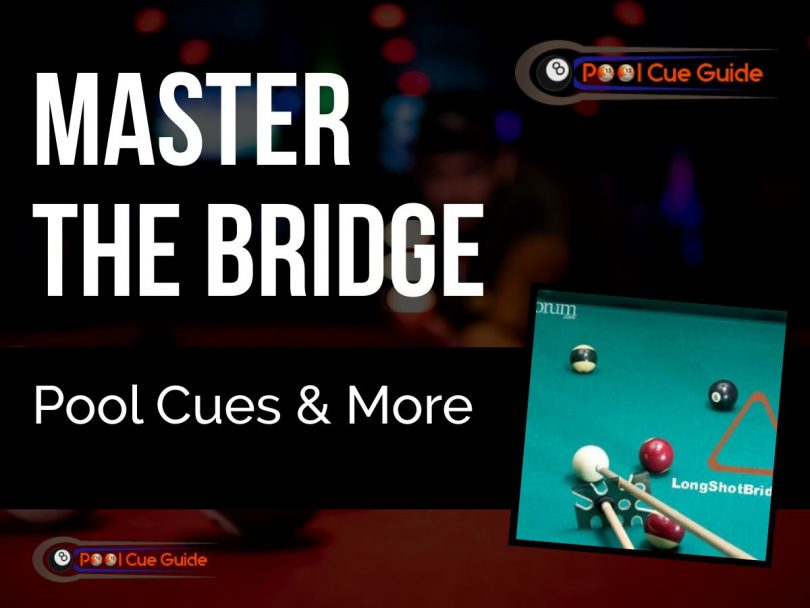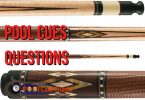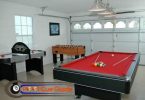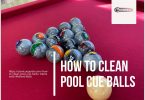There’s a lot that goes into making the perfect shot on a green table. If you can’t keep your stick from getting wiggled or off-center, then you’re already set up for failure. You will end up either hitting your balls in the wrong spot or just miss entirely.
That’s why the pool bridge was invented; specifically, for situations like this. But mastering it is about every bit as challenging as handling the best professional pool cue or the ball. So how do you make sure that you can get your bridge mastery working the right way to get decent shots? Well, stick around, we’re about to find out.
Content Navigation
Find a Bridge You’re Comfortable With
Don’t let the critics fool you. The pool is just about every bit as physically demanding as any other sport out there. And one aspect about sports that’s always emphasized is keeping proper form. Whether you’re getting ready for a 100m sprint, dunking a ball into the net, or using a wooden stick to strike balls, they all have a recommended physical form and posture.
You’ll never be able to keep this posture active if you’re not comfortable. The fact is, everyone will have their preferred bridge technique that they’ll be comfortable with. We’re all designed differently, so it only makes sense.
Many will try to sell you on to the idea of using an expert technique that supposedly works for professional-level play. But at the end of the day, you have to do what comes naturally to you. Forcing yourself to fit a certain bridge-type will only tense your muscles up more and cause problems down the line.
Closed, Open, or Mechanical?
When it comes to pool bridges, there’s more than one type out there. Most basic pool bridges are broken down into open and closed bridges, as well as mechanical.
Open bridges will be a good enough starting point for most players. They also offer you the ability to easily raise or lower your cue for a shot as you see fit. In a majority of cases, they’re the go-to type of bridges.
Closed bridges are somewhat of a step up. They should be attempted once you have some serious experience under your belt. These bridges will let you go for more complex shots that require precise movement and spin.
In the kind of situations where you’re figuratively or literally up against the wall, you might want to opt for a mechanical bridge. They’re wooden and shaped, just your cue. They make it all the more easy to hit shots that are either too far away or seem downright hard to pull off on your own.
Assume the Stance
Before you can use the use bridge to make the shot, you need to know what the shot actually is. Adjusting your level of preparedness can only help in making sure that you don’t let the bridge do all the work.
To do this, visualize the angle of the shot as well the trajectory that the ball needs to take for a successful hit. Place your bridge down so that the cue is in a good enough position. Adjust your posture so you can make the shot properly. Finally, move the bridge either forwards for a softer shot or backward for a more powerful hit.
Getting the stance is about half the battle when it comes to mastering bridges. Everything from your fingers up to your elbow, shoulder, back, and legs have an equal part to play in making your shots stay on target.
Try Out High-Level Bridges
Basic bridges can be essential to your play. But they’re far from the only type of bridges out there. You can benefit greatly from learning some bridges used in the high-level professional play to take your own playing to a different level.
There are two of these you might have heard of or seen in regular pool play; the rail bridge and the over-the-rail bridge.
In the rail bridge, you’re using the rail of the pool table to build your bridge. You rest your fingers on the bridge and use it to pivot the ball out of a hard place. Similarly, the over-the-rail has you launch the ball over an obstruction or another ball by slanting your fingers.
Bear in mind that these aren’t exactly fundamental bridges that you absolutely have to know. Having them in your arsenal is better than not having them at all.
Warm-Up Before the Shot
There’s no need to hasten the shot when you’re working on your bridges. You can only make things worse for yourself if you try to shoot before you’ve had a chance to get warmed up.
Before you execute the shot, make sure you line everything up properly without leaving anything to chance. You also want to get a feel for the kind of stroke you’re looking to make before you go through it. Rock the stick back and forth, making a few practice strokes without actually hitting the ball.
At this point, you also want to make any fine-tuning or adjustments. If something feels out of place or uncomfortable, it will be better to change it now before you don’t get the chance later.
Execute It
You can have all the planning and preparation in the world. But ultimately, getting your shot to kick-off will be what matters. Beginners can easily get frazzled by overthinking or over planning and ultimately missing the goal.
That’s why you’ll have to master your execution as the final step to getting your bridge mastery. One of the recommended ways of doing this is by locking yourself in once you assume the right position. Freeze your body and control your breathing so you can lead up to the strike.
Another thing to keep in mind is not to lift the bridge off too quickly. Keep it planted on the table a little longer than usual, so you have time to shoot properly. Finally, strike and hope for the best.
Self Professed Geek , into all kinds of tech including search engine optimization , Computer networks and more. I love playing pool ( eight ball , nine ball and snooker) I own my own pool table a play daily. I love to try out new pool cues and accessories. read my review of actual pool cue i have used and use often.








